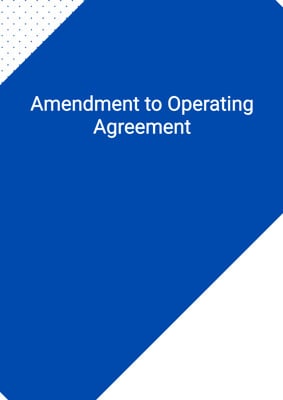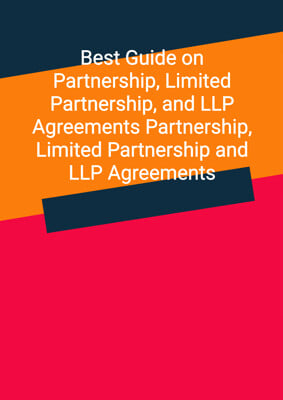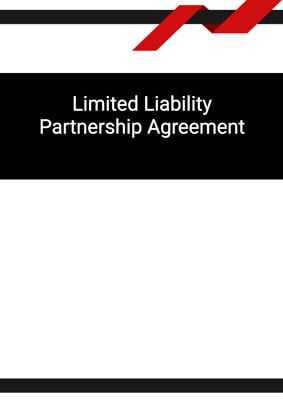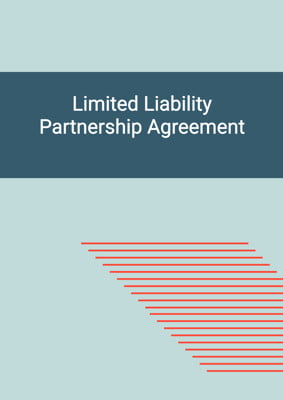How to Tailor the Document for Your Need?
01
Create Document
Fill in the details of the parties. You can click the "Fill with Member’s Information" button to complete it with information saved to your account.
02
Fill Information
Please fill in any additional information by following the step-by-step guide on the left hand side of the preview document and click the "Next" button.
03
Get Document
When you are done, click the "Get Document" button and you can download the document in Word or PDF format.
04
Review Document
Please get all parties to review the document carefully and make any final modifications to ensure that the details are correct before signing the document.
Document Preview
Document Description
The Limited Liability Partnership Agreement is a legal document that establishes a partnership between five parties (referred to as p1, p2, p3, p4, and p5) for the purpose of conducting a business. The agreement regulates the relationship between the members and the management of the partnership. It contains various definitions, including the meaning of accounting period, affiliate, accounts, auditors, budget, designated members, director, effective date, executive manager, members, LLP interest, LLP board, percentage share, current accounts, and more.
The agreement covers several important sections. Section 1 provides interpretation and definitions for the terms used throughout the agreement. Section 2 states the commencement of the agreement and the necessary steps for the incorporation of the LLP. Section 3 outlines the purpose and nature of the business to be conducted by the LLP. Section 4 specifies the initial contributions to the capital of the LLP by each member. Section 5 addresses further finance and the obligations of each member to contribute funding as required. Section 6 deals with the allocation of profits and losses among the members. Section 7 establishes the LLP board and its responsibilities, including the appointment and removal of directors. Section 8 delegates day-to-day executive management to the chief executive and other executive managers. Section 9 addresses LLP property and ownership. Section 10 contains undertakings by the members, including non-competition clauses. Section 11 allows for the reimbursement of expenses incurred by the members. Section 12 outlines the requirements for maintaining proper accounting records and the preparation of audited accounts. Section 13 covers budgets and information, including the preparation of management accounts and reports. Section 14 provides indemnities by the members to each other. Section 15 addresses default and the rights of the other member in the event of an event of default. Section 16 outlines the procedures for transferring or assigning LLP interests. Section 17 establishes confidentiality obligations and restrictions on making announcements. Section 18 deals with termination and deadlock situations. Section 19 covers waivers and amendments to the agreement. Section 20 addresses severability of provisions. Section 21 states that the agreement constitutes the entire agreement between the parties. Section 22 outlines the procedures for giving notices under the agreement. Section 29 provides for the settlement of disputes and the governing law of the agreement. Section 30 allows for the execution of the agreement in counterparts. Section 31 states that the agreement does not confer any rights on third parties.
This detailed description provides a comprehensive overview of the Limited Liability Partnership Agreement, highlighting its purpose, key sections, and the obligations and rights of the members.
How to use this document?
To use the Limited Liability Partnership Agreement, follow these steps:
1. Begin by entering the names and principal places of business of the five parties involved in the agreement. This ensures clear identification of the parties.
2. Familiarize yourself with the definitions provided in Section 1 of the agreement to understand the terms used throughout the document.
3. Review Section 2, which covers the commencement of the agreement and the necessary steps for incorporating the LLP. Ensure that all required documents are completed and delivered to the appropriate authorities.
4. Read and understand Section 3, which outlines the purpose and nature of the business to be conducted by the LLP. Ensure that all parties are in agreement with the stated objectives.
5. Review Section 4, which specifies the initial contributions to the capital of the LLP by each member. Ensure that all contributions are accurately recorded and credited to the respective current accounts.
6. Familiarize yourself with Section 5, which addresses further finance and the obligations of each member to contribute funding as required. Ensure that all members understand their responsibilities for providing additional funding.
7. Understand the allocation of profits and losses among the members, as outlined in Section 6. Ensure that all members are aware of how profits and losses will be distributed.
8. Review Section 7, which establishes the LLP board and its responsibilities. Ensure that all members understand the composition of the board and the appointment and removal procedures for directors.
9. Understand the delegation of day-to-day executive management to the chief executive and other executive managers, as outlined in Section 8. Ensure that the roles and responsibilities of these individuals are clearly defined.
10. Familiarize yourself with Section 9, which addresses LLP property and ownership. Ensure that all members understand their rights and obligations regarding LLP property.
11. Review Section 10, which contains undertakings by the members. Ensure that all members are aware of the non-competition clauses and other obligations outlined in this section.
12. Understand the provisions for the reimbursement of expenses incurred by the members, as outlined in Section 11. Ensure that all members are aware of the procedures for seeking reimbursement.
13. Familiarize yourself with the requirements for maintaining proper accounting records and preparing audited accounts, as outlined in Section 12. Ensure that all necessary records and accounts are kept in accordance with the agreement.
14. Review Section 13, which covers budgets and information. Ensure that the chief executive is responsible for preparing the necessary budgets and management accounts.
15. Understand the indemnities provided by the members to each other, as outlined in Section 14. Ensure that all members are aware of their obligations to indemnify each other.
16. Familiarize yourself with the provisions for default and the rights of the other member in the event of an event of default, as outlined in Section 15. Ensure that all members understand the consequences of defaulting on their obligations.
17. Review the procedures for transferring or assigning LLP interests, as outlined in Section 16. Ensure that all members understand the requirements and restrictions for transferring their interests.
18. Understand the confidentiality obligations and restrictions on making announcements, as outlined in Section 17. Ensure that all members are aware of their responsibilities regarding the confidentiality of information.
19. Familiarize yourself with the provisions for termination and deadlock situations, as outlined in Section 18. Ensure that all members understand the procedures for terminating the agreement and winding up the LLP.
20. Review the provisions for waivers and amendments to the agreement, as outlined in Section 19. Ensure that all members understand the procedures for amending the agreement.
21. Understand the procedures for giving notices under the agreement, as outlined in Section 22. Ensure that all members are aware of the requirements for giving and receiving notices.
22. Familiarize yourself with the procedures for settling disputes and the governing law of the agreement, as outlined in Section 29. Ensure that all members understand the procedures for resolving any disputes that may arise.
23. Finally, ensure that all parties involved in the agreement sign the document and keep a copy for their records. It is recommended to seek legal advice when entering into such agreements to ensure compliance with applicable laws and regulations.
Not the right document?
Don’t worry, we have thousands of documents for you to choose from:






















































